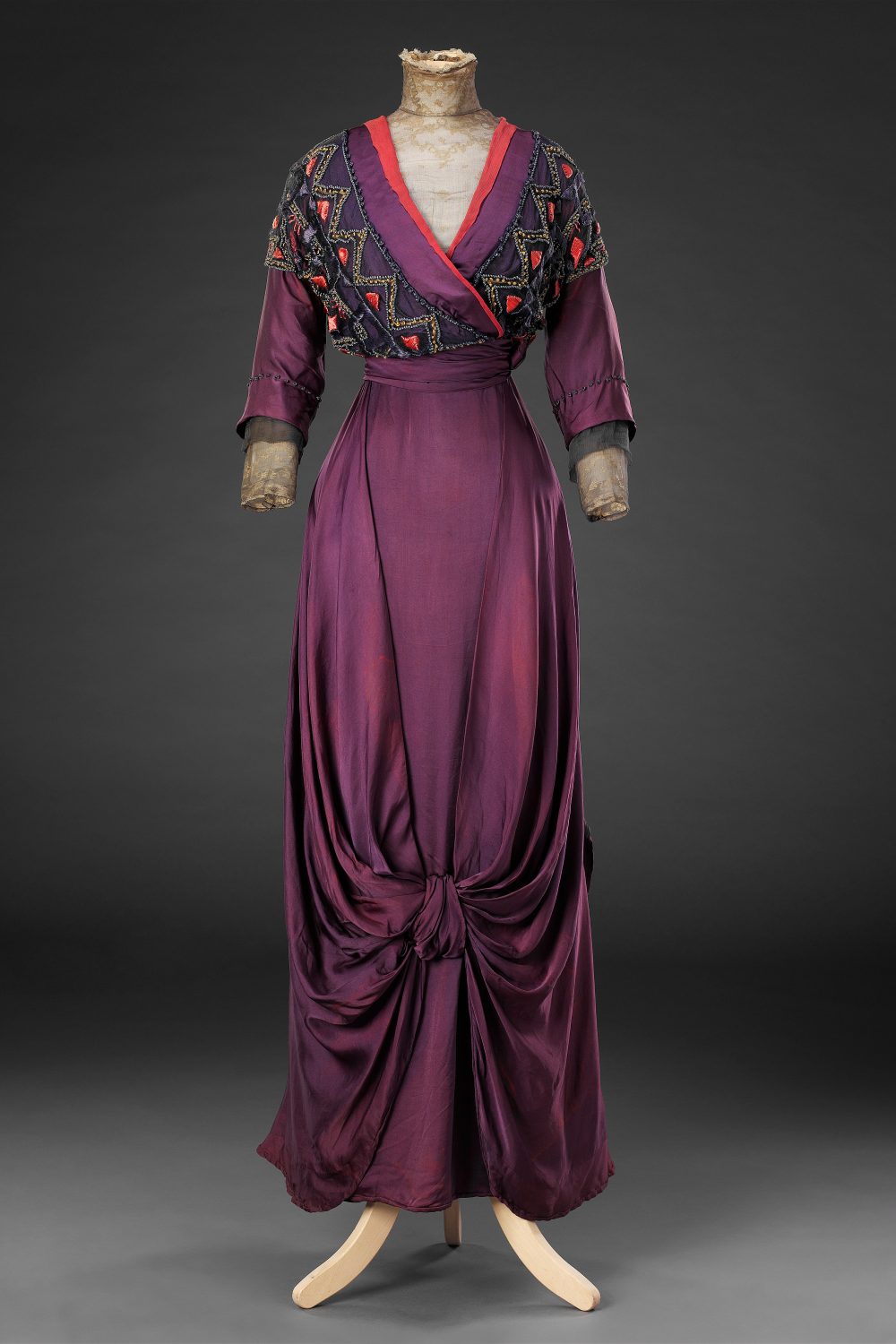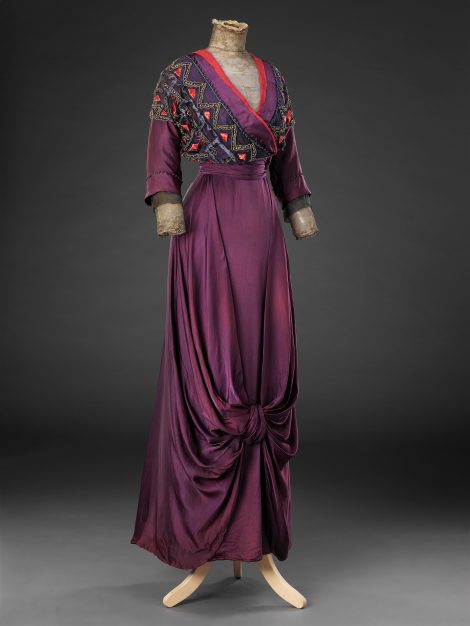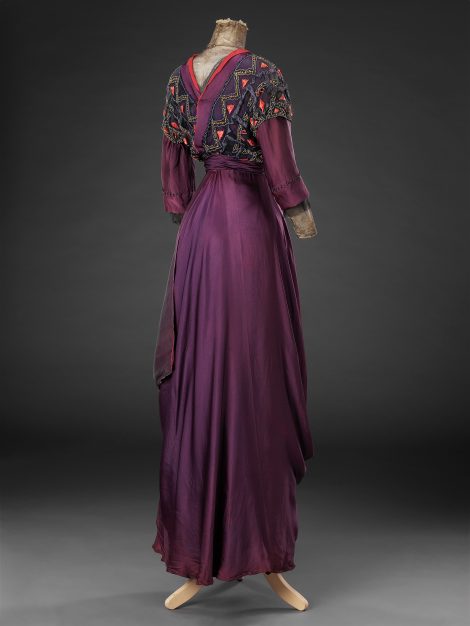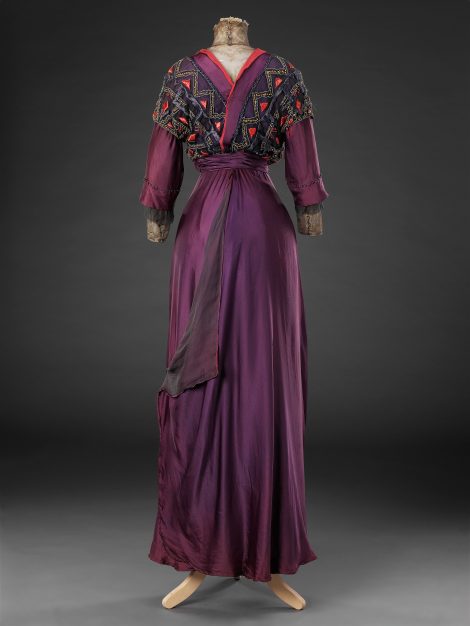The vivid colours chosen for this dress became de rigueur in the second decade of the 20th Century, a time of bold effects on the arts that influenced the orientalism of the couturier Paul Poiret’s designs, and the eastern-themed productions of the Ballets Russes, notably Schéhérazade of 1910. Contemporary artistic movements such as the Fauves used strong, non-naturalistic colours in their paintings to evoke an emotional response in the viewer. The bodice’s loosely executed geometric motifs, worked in silk thread and decorative cord on black tulle, recall those of Ballets Russes costumes although their effect is slightly at odds with the delicate lace cuffs, high boned collar and underbodice redolent of earlier fashions. The untrimmed skirt is draped into a central knot just below knee level, another orientally-inspired feature laid claim to by Paul Poiret. In some cases these skirts, known as hobble skirts, were narrow enough to impede movement, thus subjecting them to ridicule in magazines such as Punch that in April 1910 published a cartoon of a hobbled young lady having to hop to catch a train.
The bodice is fastened at the front with a complicated series of press-studs and hooks and eyes, a method made almost redundant in the loose unstructured dresses of the following decade.



